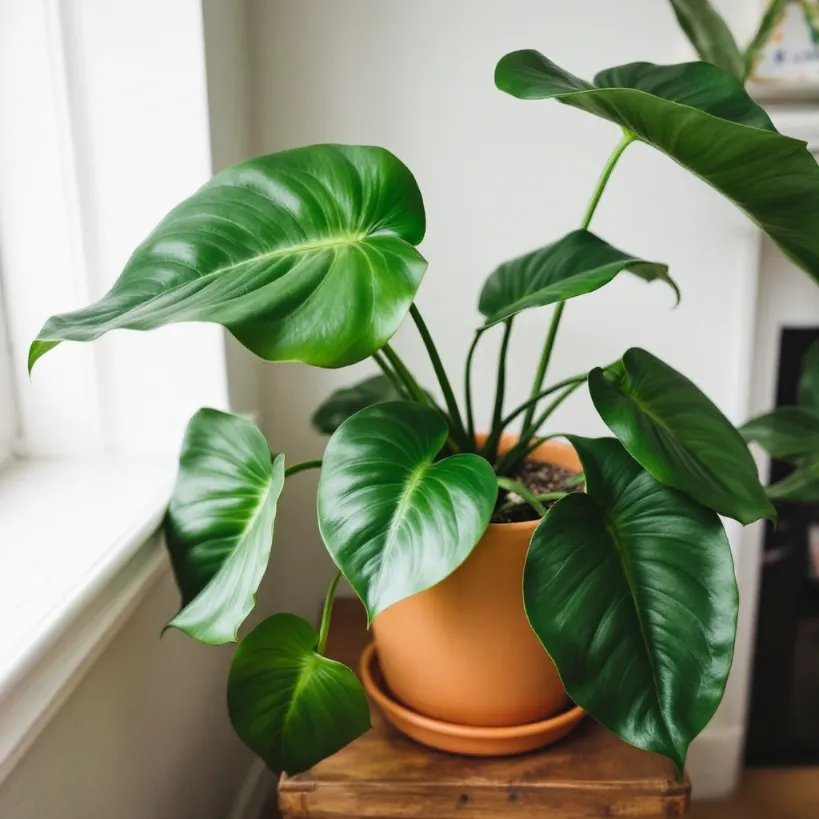Troubleshooting Philodendron Plants: Your No-Nonsense Guide to Fixing Problems FAST
Philodendrons. They’re the supposed low-maintenance, leafy companions for any home. But even these chill plants can have a bad day (or week…or month). Yellowing leaves, weird spots, that depressing droop – it’s all part of the plant-owning game.
This guide is about cutting through the fluff and actually fixing what’s wrong. No plant-whispering nonsense, just real-world solutions. This is all about how to diagnose problems with philodendron.
Key Takeaways – The “Don’t Panic” Cheat Sheet
-
Yellow Leaves? Think: Too much water, not enough light, or hungry plant.
-
Brown, Crispy Tips? Think: Dry air, thirsty plant, or too much fertilizer.
-
Droopy, Sad Leaves? Think: Too much OR too little water, cold shock, or rootbound.
-
Leggy, Stretched-Out Growth? Think: NEEDS MORE LIGHT.
-
Tiny Spots, Sticky Residue? Think: Pests! (Time for a closer look).
-
Slow or No Growth? Think: It’s not getting enough light, nutrients.
The Usual Suspects: Common Philodendron Problems (and How to Squash Them)
Philodendrons are pretty tolerant, but they’re not indestructible. Let’s break down the common gripes and get straight to the fixes.
1. Watering Woes: The #1 Killer (Seriously)
Overwatering is like drowning your plant in slow motion. It’s the most frequent mistake, and it leads to the dreaded root rot.
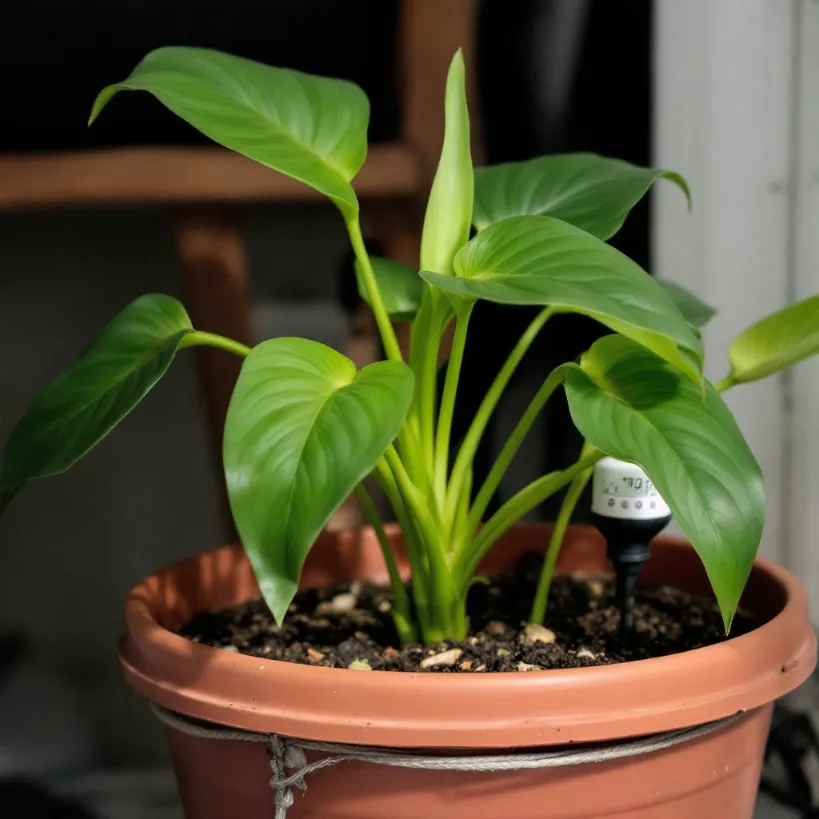
The Problem: Soggy soil cuts off oxygen to the roots, causing them to rot and die. Yellowing leaves are often the first sign.
The Fix:
-
Feel the Soil: Stick your finger about 2 inches down. If it’s damp, don’t water.
-
Drainage is King: Make sure your pot has drainage holes. No drainage holes = guaranteed problems.
-
Let it Dry (Mostly): Allow the top inch or two of soil to dry out between waterings. Philodendrons like to get a little thirsty.
-
Root Rot Rescue: If you suspect root rot (mushy, brown, smelly roots), repot immediately into fresh, well-draining soil. Trim away any rotted roots. Learn how to repot a philodendron.
-
Use a pot that allows for proper drainage
Underwatering: On the flip side, letting your philodendron go bone-dry is also a no-no.
The Problem: Droopy, wilting leaves, and eventually crispy brown edges.
The Fix:
-
Water Thoroughly: When you do water, give it a good soak until water runs out the drainage holes.
-
Don’t Let it Sit in Water: Empty the saucer or cachepot after watering.
-
Consistency is Key: Find a watering schedule that works for your plant and your environment. Learning about the watering needs of philodendrons is key.
2. Light Levels: Finding the Goldilocks Zone
Philodendrons are like Goldilocks – they don’t want it too bright, or too dark, but just right.
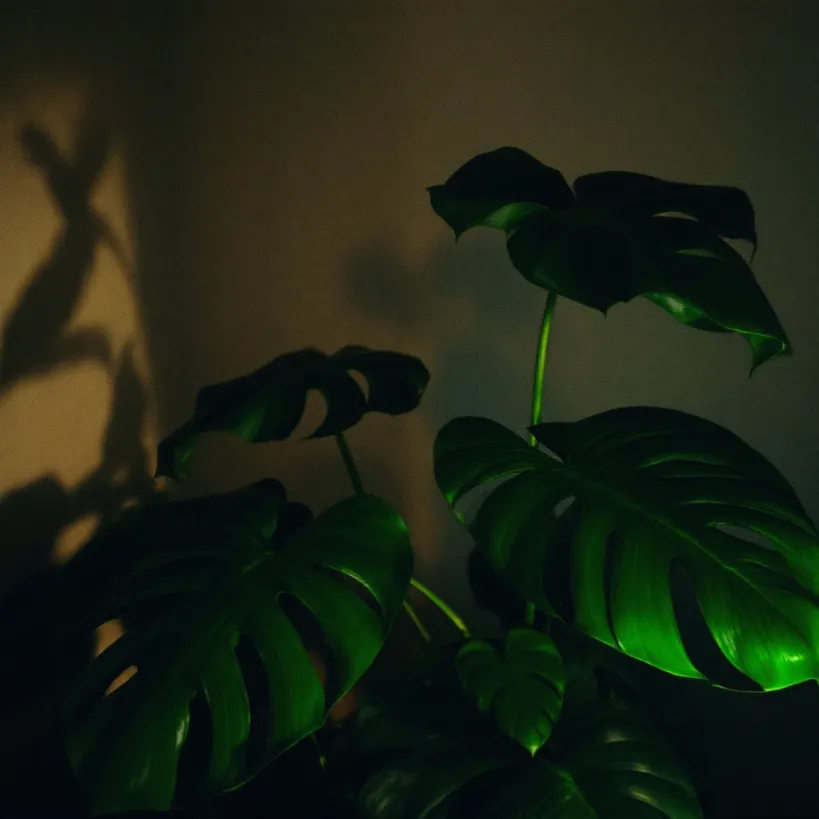
Too Much Light:
The Problem: Direct, scorching sunlight will burn the leaves, causing dry, brown patches.
The Fix:
-
Move it Back: Place your philodendron a few feet away from a sunny window, or use a sheer curtain to filter the light.
-
East or North-Facing Windows: These are usually ideal.
Too Little Light:
The Problem: Leggy, stretched-out growth, small leaves, and pale color. Your plant is desperately reaching for light.
The Fix:
-
Move it Closer: Find a brighter spot, but avoid direct, intense sun.
-
Consider a Grow Light: If natural light is limited, a grow light can be a lifesaver.
3. Humidity and Air: Think Tropical, Not Desert
Philodendrons evolved in humid, tropical environments. Your dry, air-conditioned house? Not so much.
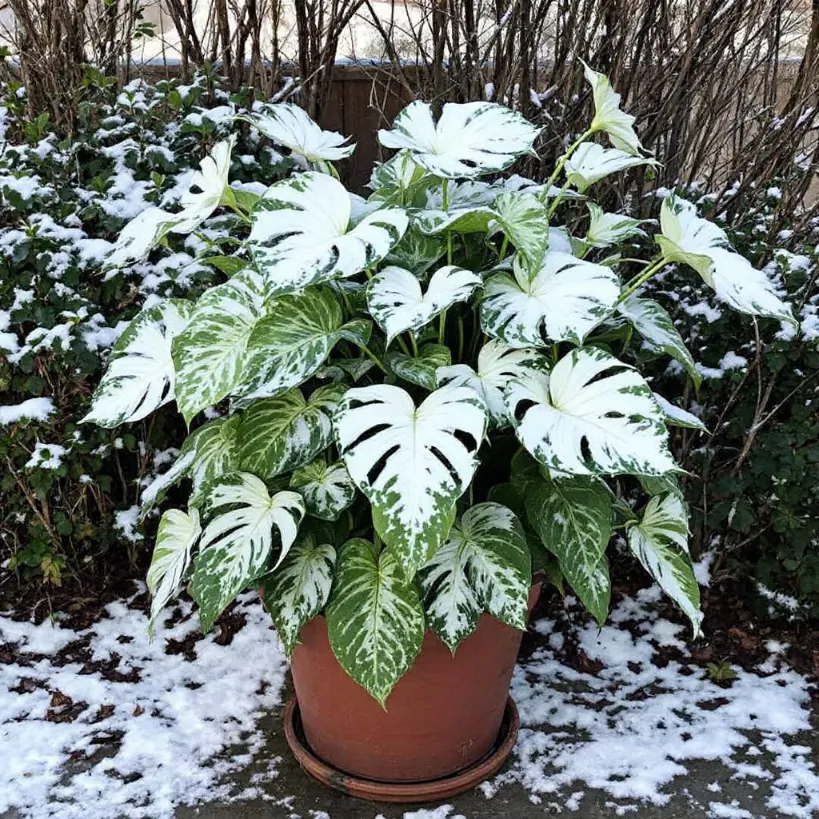
The Problem: Low humidity leads to brown, crispy leaf tips.
The Fix:
-
Humidity Boosters:
-
Humidifier: The most effective solution.
-
Pebble Tray: Place the pot on a tray filled with pebbles and water (make sure the pot isn’t sitting in the water).
-
Grouping Plants: Plants naturally create a more humid microclimate when grouped together.
-
Bathroom Buddy: If you have a bright bathroom, your philodendron might love it there!
-
Avoid Drafts: Keep your plant away from air conditioning vents, heating vents, and drafty windows.
4. Pest Patrol: Dealing with the Creepy Crawlies
Even the healthiest plants can fall victim to pests. Early detection is crucial.

Common Culprits:
-
Mealybugs: Look like tiny cotton balls, often found in leaf axils and on the undersides of leaves.
-
Spider Mites: Tiny, spider-like pests that create fine webbing. They thrive in dry conditions.
-
Scale: Small, brown bumps that attach themselves to stems and leaves.
-
Aphids: Small, pear-shaped insects that can be green, black, or brown.
The Fix:
-
Quarantine: Isolate any infested plant to prevent the pests from spreading.
-
Manual Removal: For small infestations, wipe off pests with a cotton swab dipped in rubbing alcohol.
-
Insecticidal Soap: A good all-purpose treatment for many pests. Follow the instructions carefully.
-
Neem Oil: Another effective natural insecticide.
-
Repeat Treatments: Pests can be persistent. You may need to repeat treatments several times.
-
Increase humidity.
5. Feeding Time: Fueling the Growth
Philodendrons aren’t heavy feeders, but they do need nutrients to thrive, especially during the growing season (spring and summer).
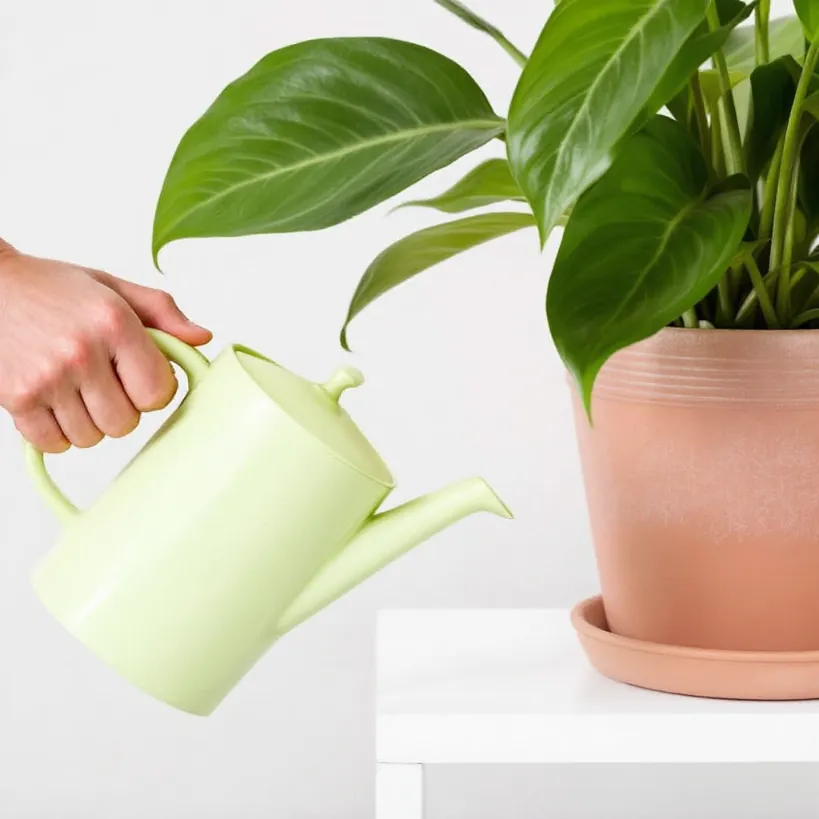
The Problem: Nutrient deficiencies can manifest as yellowing leaves, slow growth, or small, pale leaves.
The Fix:
-
Balanced Fertilizer: Use a balanced, water-soluble fertilizer diluted to half strength.
-
Growing Season Only: Fertilize every 2-4 weeks during spring and summer.
-
Don’t Overdo It: Too much fertilizer can burn the roots.
-
Flush soil with water
6. Potting Problems: Giving Roots Room to Breathe
If your philodendron is looking sad and you’ve ruled out other issues, it might be time for a bigger pot.
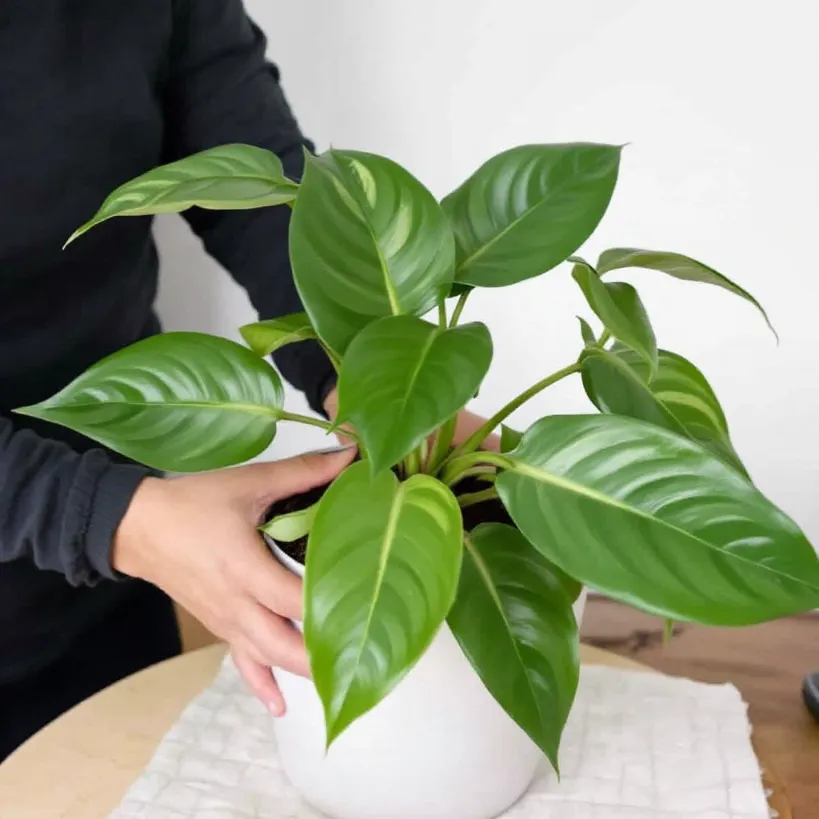
The Problem: A rootbound plant has roots that are tightly packed and circling the bottom of the pot. This restricts growth and can lead to watering problems.
The Fix:
-
Check the Roots: Gently slide the plant out of its pot. If the roots are a tangled mess, it’s time to repot.
-
Choose the Right Size: Select a pot that’s only 1-2 inches larger in diameter than the current pot.
-
Fresh Soil: Use a well-draining potting mix formulated for aroids (like philodendrons). Learn more about philodendron soil mix.
-
Repotting Season: Spring is the best time to repot.
Philodendron Problem-Solving Chart: Quick Diagnosis
Symptom
Possible Causes
Solutions
Yellowing Leaves
Overwatering, low light, nutrient deficiency, old age
Check soil moisture, improve drainage, move to brighter location (but avoid direct sun), fertilize during growing season, remove old leaves. Consider why is philodendron turning yellow.
Brown Leaf Tips
Low humidity, inconsistent watering, fertilizer buildup
Increase humidity (humidifier, pebble tray, grouping plants), water regularly, flush soil with water.
Brown Spots on Leaves
Sunburn, fungal disease, pest damage
Move away from direct sun, improve air circulation, treat for pests with insecticidal soap or neem oil, consider fungicide for fungal issues. Learn more about why does my philodendron have brown spots.
Drooping Leaves
Underwatering, overwatering, cold draft, rootbound
Check soil moisture, water thoroughly if dry, avoid overwatering, move away from drafts, repot if rootbound.
Leggy Growth
Not enough light
Move closer to a light source (but avoid direct, intense sun), consider a grow light.
Slow or Stunted Growth
Low light, nutrient deficiency, pot-bound
Move to brighter location, fertilize during growing season, repot into a slightly larger container.
Small, Pale Leaves
Low light, nutrient deficiency
Move to brighter location, fertilize during growing season.
Sticky Residue on Leaves
Pests (aphids, mealybugs, scale)
Quarantine plant, wipe off pests with rubbing alcohol, use insecticidal soap or neem oil.
Webbing on Leaves
Spider mites
Increase humidity, rinse plant with water, use insecticidal soap or neem oil.
Wilting, despite moist soil
Root rot (due to overwatering)
Repot immediately into fresh, well-draining soil, trim away any rotted roots. Adjust watering schedule.
Propagation: The “Oops, I Broke It” Solution (or Just Making More Plants)
Philodendrons are incredibly easy to propagate. If a stem breaks, or you just want more plants, don’t toss it!
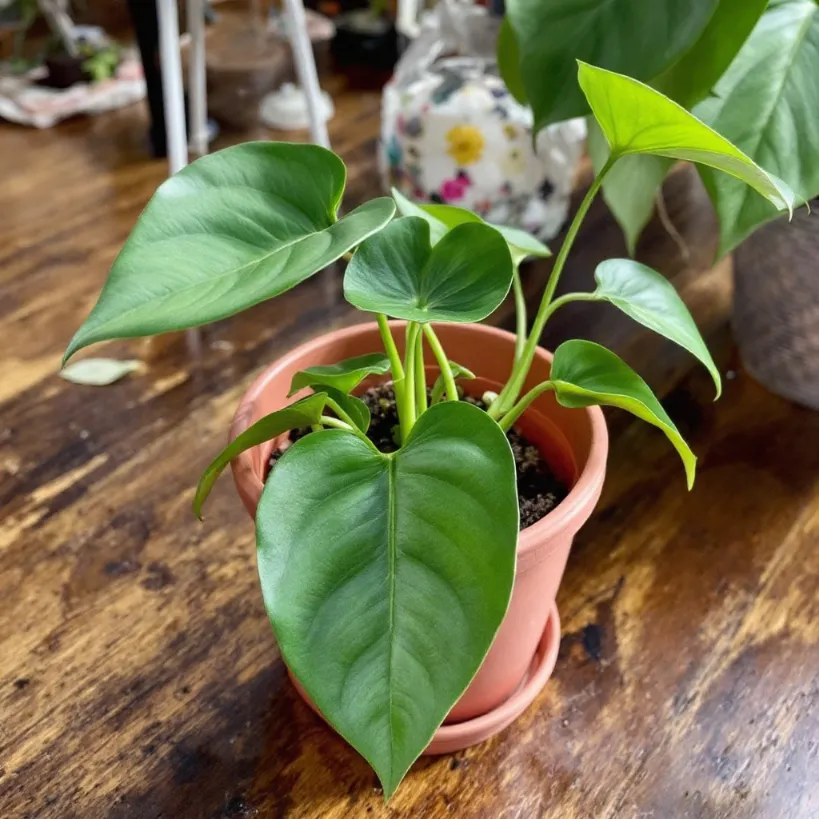
How to Propagate:
-
Take a Cutting: Use clean, sharp scissors or pruning shears to cut a stem with at least 2-3 leaves and a few nodes (the bumps where leaves emerge).
-
Water Propagation: Place the cutting in a glass of water, making sure the nodes are submerged. Change the water every few days. Roots should appear in a few weeks.
-
Soil Propagation: Dip the cut end in rooting hormone (optional) and plant it directly in moist potting mix. Keep the soil consistently moist but not soggy.
You can also learn How to Propagate Philodendron Birkin
Less Common Problems (and What to Do)
-
Bacterial Leaf Spot: Small, water-soaked spots that turn brown. Improve air circulation and avoid wetting the leaves. Copper-based fungicides can help.
-
Sudden leaf Drop: Could be the consequence of dripping philodendron.
-
Temperature Stress: Sudden changes in temperature can shock your plant. Keep it away from drafts and extreme heat or cold.
-
Water Quality Issues: If you have hard water or water with high chlorine levels, try using filtered or distilled water.
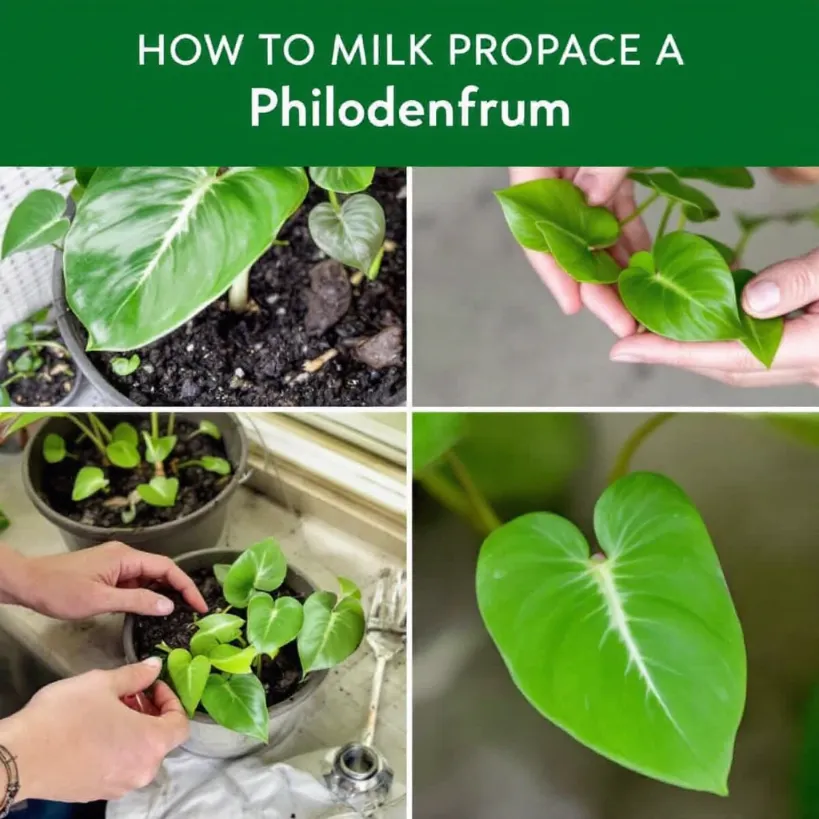
The Bottom Line: Listen to Your Plant
Your philodendron will tell you what it needs – you just have to learn to read the signs. Don’t panic over every minor imperfection. Observe, adjust, and be patient. With a little care and attention, your philodendron will be a happy, thriving member of your indoor jungle. And, remember, if you really mess up, you can always propagate! Get more philodendron propagation tips and tricks
References:
[1] https://www.livelyroot.com/blogs/plant-care/philodendron-leaves-turning-yellow-or-brown
[2] https://www.littlejungle.in/blogs/indoor-plants/common-problems-and-solutions-for-philodendron-plants
[3] https://www.thespruce.com/grow-philodendron-houseplants-1902768
[4] https://greenboog.com/how-to-care-for-your-philodendron-mican-a-guide-for-indoor-gardeners/
[5] https://plnts.com/en/care/houseplants-family/philodendron
[6] https://houseplantcentral.com/problems-with-philodendron/
[7] https://florasense.com/blogs/solving-common-philodendron-problems/
[8] https://www.marthastewart.com/8257952/how-plant-care-philodendron
[9] https://www.patchplants.com/pages/plant-care/complete-guide-to-philodendron-care/
[10] https://greg.app/philodendron-plants-problems/
[11] https://www.gardeningknowhow.com/houseplants/philodendron/caring-for-philodendrons.htm
[12] https://www.plantsforallseasons.co.uk/blogs/philodendron-care/philodendron-problems-to-look-out-for-and-how-to-solve-them
